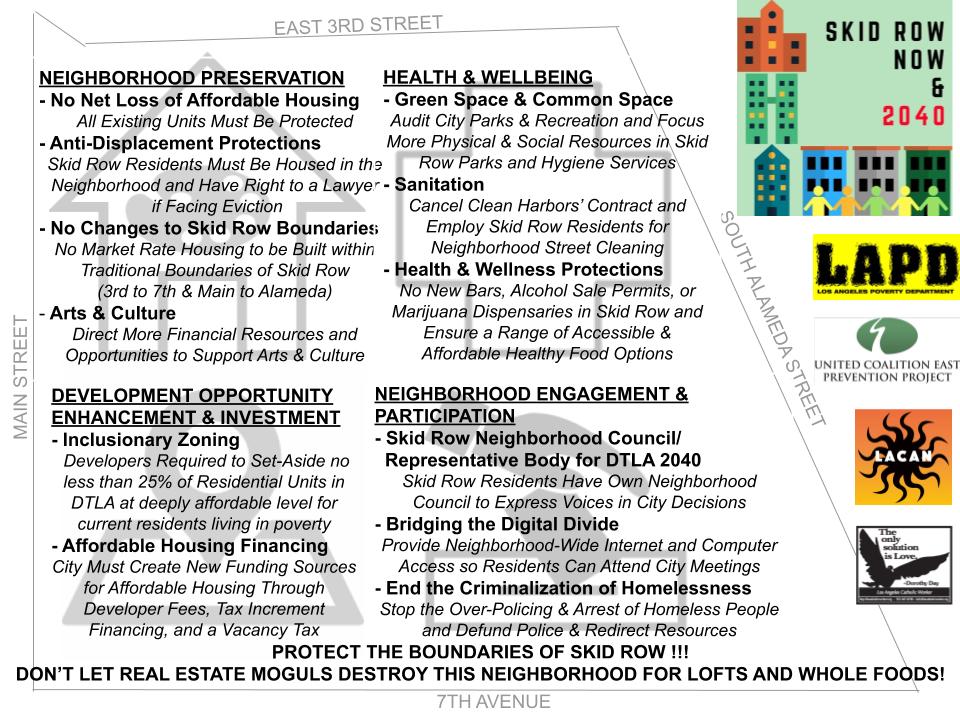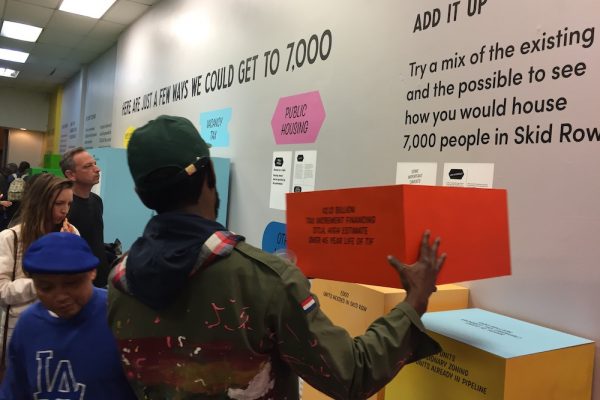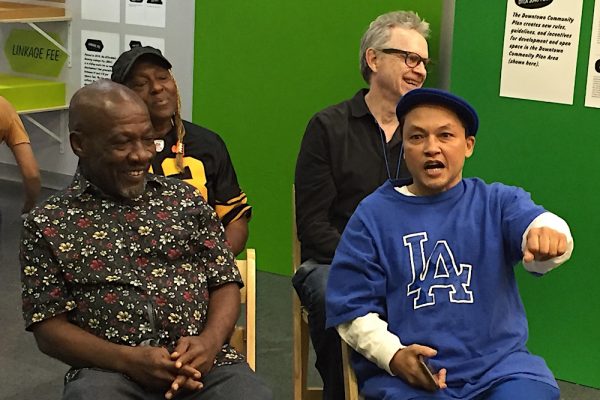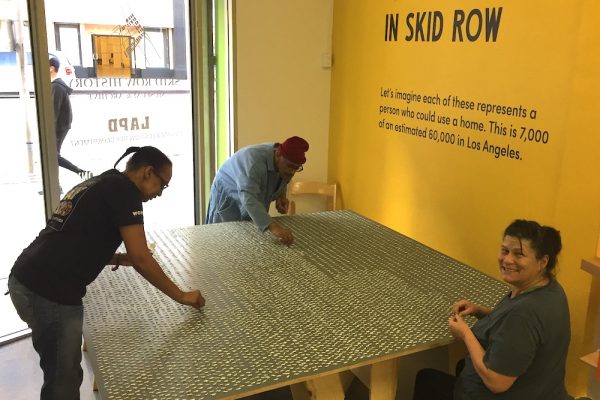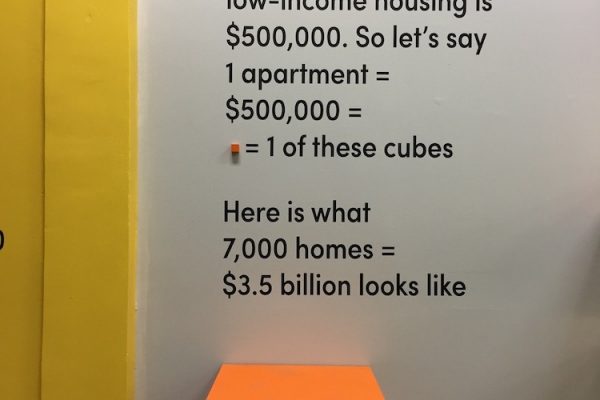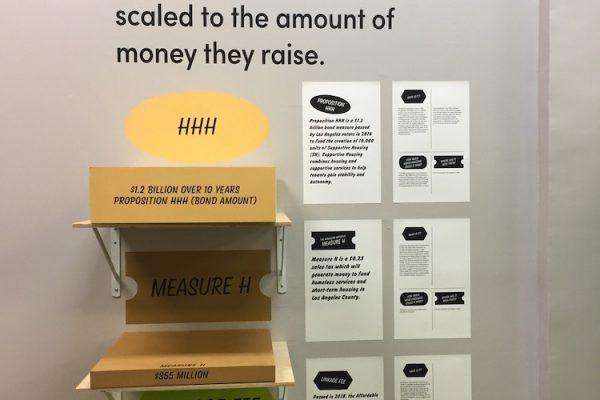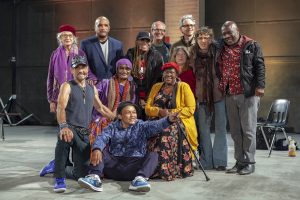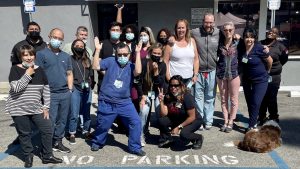How to house 7,000 people in Skid Row?
We’re talking about housing everyone now living on the streets of Skid Row –and more.
Tired of promises and no solutions to L.A.’s housing crisis? At the exhibition, learn together and in public how housing works and could work in L.A.
A coalition of Skid Row community members and groups have created “Skid Row Now & 2040” a plan that identifies funding sources to house people who have extremely low incomes. The exhibition created by Woo, Kobara, Brouwers & Malpede makes the solutions in the plan graphically legible.
You will be able to understand how each funding mechanism works and how many dollars could be raised and therefore how many people could be housed by the City’s adoption of these income-generating tools. They include dollars for housing that could be generated from: inclusionary zoning, a vacancy tax, and the creation of a tax-increment financing district. Worry not— all these concepts will be graphically and simply explained by the exhibition. What you get to do is choose your mechanisms and determine their geographical boundaries. When your stack of dollars from each of your sources reaches $3.5 Billion, Congratulations! You have a viable plan for housing 7,000 People in Skid Row. Next: the hard work of getting City Council to enact it.
At the March 7th opening, The Los Angeles Poverty Department will present a 25-minute introduction to the exhibition —-a dystopic, performative warning: one that imagines a new Amazon headquarters in Skid Row.
During the development phase of the project, “How to House 7,000 People on Skid Row,” presented two public conversations with housing policy experts and community organizers. Additional public events will take place during the run of the exhibition. At the next event, on Wednesday March 18, from 4-8pm, members of the Anti-Eviction Mapping Project will continue to collect stories associated with particular places on Skid Row— a continuation of the work they began in October at the Festival for All Skid Row Artists.

